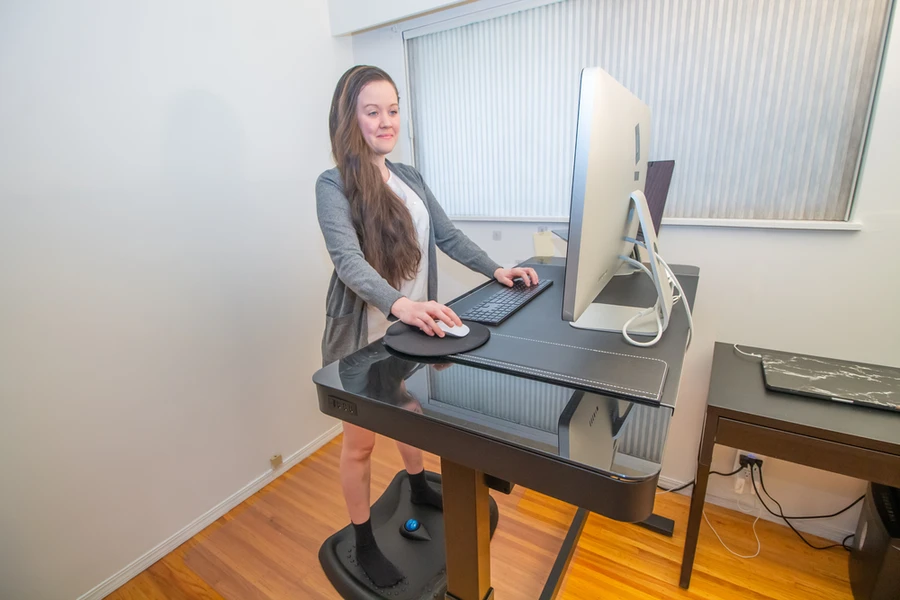
TLDR:
Poor ergonomics in the workplace isn’t just uncomfortable for employees—it can have serious financial consequences for your business. From increased workers' compensation costs to lost productivity, the direct and indirect costs of workplace injuries due to poor ergonomics can add up quickly.
In this blog, we’ll explore how poor ergonomics affects your bottom line and why investing in ergonomic solutions is crucial for long-term success.
When employees work in environments that aren’t ergonomically optimized, they are more likely to develop musculoskeletal disorders (MSDs) and suffer from preventable injuries. The consequences of poor ergonomics go beyond just discomfort—they lead to real financial losses for businesses. Let’s break down how poor ergonomics impacts your bottom line.
Workplace injuries resulting from poor ergonomics can lead to both direct and indirect costs for a company.
The most immediate costs come from workers' compensation costs. When an employee is injured due to poor ergonomics, your business may have to cover medical expenses, rehabilitation costs, and wage replacement during the employee’s recovery period. These costs can quickly escalate if the injury requires long-term treatment or leads to permanent disability.
The indirect costs are often harder to quantify but can be even more damaging in the long run. Injuries can lead to lost productivity as employees take time off to recover, or other workers may have to cover for the injured person, leading to burnout. Additionally, poor ergonomics can negatively impact employee morale, leading to lower engagement and increased turnover.
Musculoskeletal disorders (MSDs) are among the most common injuries resulting from poor ergonomics. According to the Bureau of Labor Statistics, MSDs account for a significant portion of workplace injuries, particularly in jobs that require repetitive motions, heavy lifting, or prolonged sitting or standing. 30% of all days away from work are due to MSDs.
Common causes of MSDs in the workplace include:
Without addressing these causes of musculoskeletal disorders in the workplace, employees are more likely to develop chronic conditions that lead to extended absences and higher healthcare costs.
When an employee suffers from an injury due to poor ergonomics, it directly impacts workers' compensation costs. Employers are responsible for covering the costs associated with workplace injuries, and poor ergonomics often leads to a higher frequency of claims. How does ergonomics affect workers’ comp? Poor ergonomics can lead to more frequent and severe injuries, resulting in higher insurance premiums and a greater financial burden for the business.
The long-term impact of poor ergonomics can be substantial. Workers' compensation claims may stay on the record for years, leading to higher rates when it comes time to renew insurance policies. This means that a single preventable injury could have lasting effects on your company’s bottom line.
And if your company is self-insured, one injury can require $1-2M in new revenue to cover!
Either way, it’s a lose, lose proposition.

One of the most frustrating aspects of poor ergonomics is that many of the resulting injuries are preventable. With the right ergonomic interventions, businesses can reduce the risk of musculoskeletal disorders (MSDs) and other workplace injuries. The cost of preventing these injuries is often much lower than the cost of dealing with the aftermath.
By investing in ergonomic training, workstation assessments, and appropriate equipment, companies can significantly reduce the number of injuries. For example, something as simple as providing employees with adjustable chairs or ergonomic keyboards can go a long way in reducing discomfort and preventing long-term injuries.
The cost of workplace injuries doesn’t stop with medical bills and insurance premiums. Poor ergonomics can impact various aspects of business performance, including:
In short, poor ergonomics can harm your business in more ways than one. Investing in ergonomic solutions not only helps keep employees healthy but also protects your bottom line.
Addressing ergonomic issues in the workplace is essential for reducing both direct and indirect costs. Here are a few strategies to improve work environments and mitigate ergonomic risks:
The consequences of poor ergonomics are far-reaching and can negatively impact your business’s bottom line through increased costs, injuries, and lost productivity. By addressing ergonomic issues in the workplace, you can reduce the cost of workplace injuries, improve employee morale, and ensure long-term success.
Investing in ergonomics isn’t just about employee comfort—it’s a smart financial decision that pays off by reducing preventable injuries, lowering workers' compensation costs, and fostering a healthier, more productive workforce.

Share:
We'd Love to Chat!
ErgoScience makes the workplace better by applying evidence-based injury prevention through proven, defensible methodologies.


Proudly built by Adam Black Media Copyright © All rights reserved.
Our goal is to help people in the best way possible. this is a basic principle in every case and cause for success. contact us today for a free consultation.